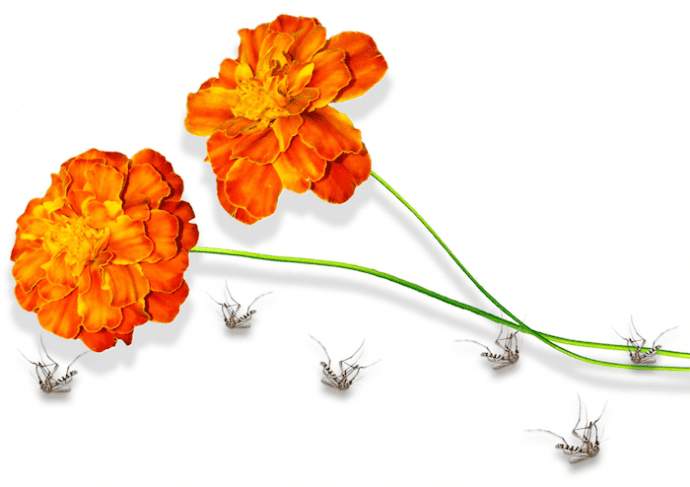As the Zika virus outbreak threatens to spread from South America to the rest of the world, scientists are scrambling to find a cure for the mosquito-borne disease. Although Brazil is currently using synthetic pesticides and transgenic mosquitos in an attempt to control the Aedes aegypti mosquitos that carry the virus, a team of New York University (NYU) scientists is now suggesting that the answer might be as simple as a common flower and a pot of boiling water.

The Mexican Marigold flower that could be the key to fighting the Zika virus. Credit: New York University
Some plants have evolved chemical defenses in the form of potent insecticides to protect themselves from insect damage. For example, pyrethrins are commonly used as an insecticide and insect repellant and originate from a type of Chrysanthemum flower.
Back in 1991, a study published in the Journal of the American Mosquito Control Association found that the essential oil of the Tagetes minuta plant – also known as the Mexican Marigold – can kill A. aegypti larvae for at least nine days at just 40 parts per million, which is considered to be a very small amount.
Using this research as a foundation, NYU chemical and biomolecular engineering professor Mark Green and his team discovered that this essential oil is a potent larvicide when added to standing water, which is where the A. aegypti mosquitos lay their eggs. Green claims that since these particular mosquitos spread the Zika virus – along with the dengue, yellow fever and chikungunya viruses – at a local level, this kind of treatment is very effective.
“This mosquito bites where it’s born, so by treating standing water in an area, you can effectively eliminate that population,” he said, adding that these natural pesticides are much safer than synthetic alternatives. “You could make this yourself and use it around the yard, just by boiling the plant and treating any standing water.”
Although pesticide demand is increasing due to the recent fears of a Zika spread, Green suggests that scientists invest more effort into natures chemical defenses such as the oil of the Mexican Marigold.
“These plant chemicals are the product of hundreds of millions of years of evolution, as plants learned to defend themselves against similar insects,” he said. “Why shouldn’t we take advantage of that intelligence to protect ourselves?”









